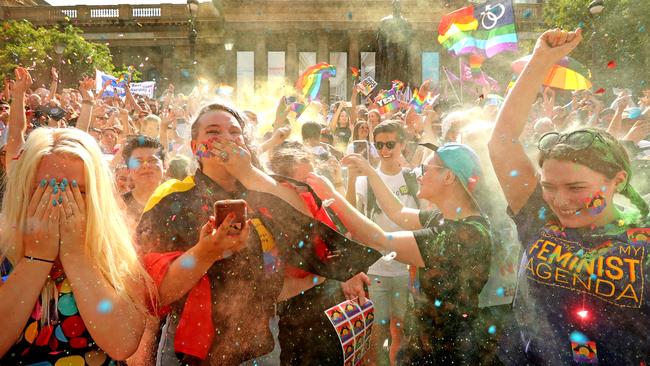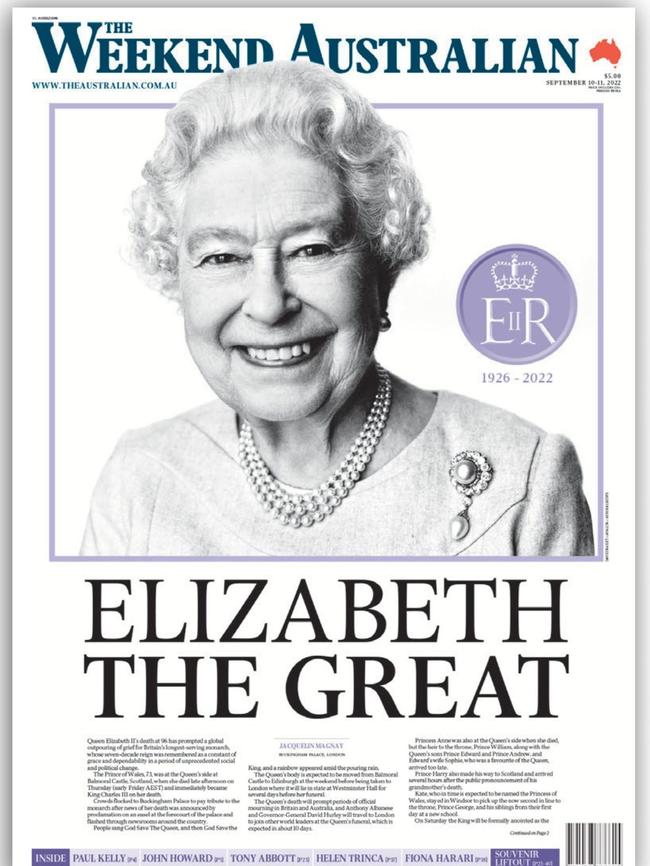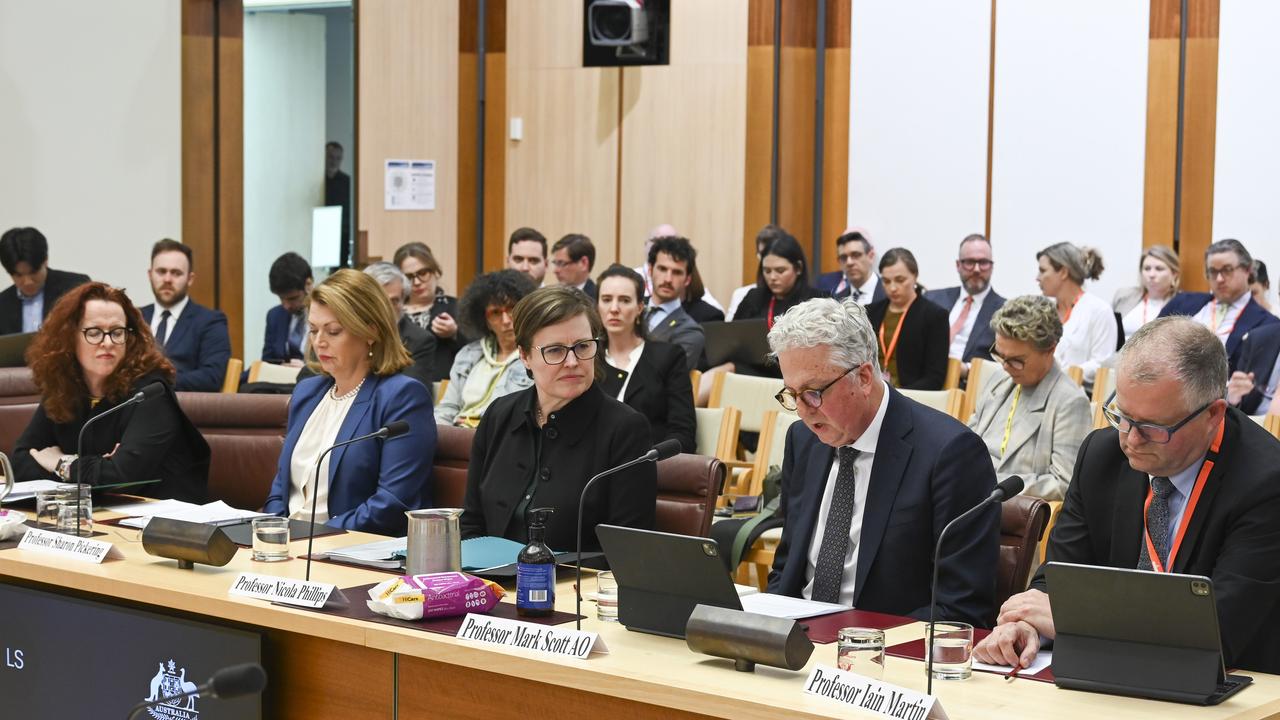‘National shame’ or a ‘cultural collision’?
They gathered in darkness in unprecedented numbers, reaching more than 1000 people at least twice this week as they strive for entry to the exclusive club of those who have scaled Australia’s rocky, red heart. Here’s how we reported on it at the time.

For The Australian’s 60th anniversary we are celebrating six decades of excellence in journalism. Today we look at the key cultural events since 2010
LAST FOOTSTEPS ON THE ROCK
- By Amos Aikman. First published October 5, 2019

They have been gathering in darkness in unprecedented numbers, reaching more than 1000 people at least twice this week as they strive for entry to the exclusive club of those who have scaled Australia’s rocky, red heart.
Exploiting the last school holidays before the world-famous Uluru climb closes on October 26, families have travelled from around the country and overseas in the hope of making a final dash for the summit.
You see their camper-trailers stopped on verges, their utes, SUVs and rental vehicles in overflowing carparks. As dawn gathers, they form a neat line snaking hundreds of metres around the rock’s base, waiting to hear if, on their day, the climb will open.
John Lauder, a retiree from Newcastle, trekked halfway across the continent to start a queue before 4am: “I’m not leaving until I climb it,” Mr Lauder said.
He finally bounded through the gate on his fourth attempt, on Wednesday, when rangers opened the climb “early” just before 7am. The experience hardened Mr Lauder’s view that the “amazing” Uluru summit should remain available to everyone.
Craig Woods, a local Anangu man who has been watching visitors’ antics, described the scene as “two cultures colliding”: patriotic Aussies coming from far and wide to make a pilgrimage to a modern-day national icon.

A few kilometres down the road, traditional owners whose identity was entwined with Uluru, and Dreaming stories wish the climb had never become a tourist draw. “We’ve got people across the continent who think their God-given rights are being taken away by a very small minority,” Mr Woods said. “They talk about their culture and their beliefs and that sort of stuff. There are two cultures colliding: one culture that’s maybe 300 years old and another that’s – I don’t know exactly how long Anangu have been here – much older.”
Michael and Rachel Wells and their three kids, from Werribee in Victoria, flew to Alice Springs and drove to Uluru-Kata Tjuta National Park for a three-day trip. Ms Wells opted not to climb out of respect for Aboriginal wishes, but Mr Wells felt it was reasonable to go up while the climb remained open.
He and six-year-old Harry made it halfway to the summit before pushing and shoving on the crowded route caused them to return. Ella, 13, continued alone.
“It just felt great, that sense of achievement, that I’ve made it to the top, and that I didn’t do it with Dad either,” Ella Wells said. “I got up there; I didn’t struggle as much as I thought I would … and the view was just amazing.”
Uluru visitors justified their decisions to climb – or not – in different ways. Some said the rock was a natural gift that belonged to no one, others that it was in the whole nation’s custody. Some thought climbing should have been banned long ago.
“I don’t know much about Aboriginal culture, but it (closing the climb) is obviously something that’s very important to them,” Ella Wells said. “It’s a little bit disappointing (that any children I might have won’t be able to go up), but I can share my experiences with them … and I can still take them there (to Uluru). If I have kids, they can still see it.”
Sinking stubbies atop their utes while watching Uluru’s famous sunset view, Grant Davies, Paul Carmody and Travis Hamm, all from Darwin, were not so sure.
“It’s a national shame,” Mr Carmody said. “There’s no spiritual reasons (to close the climb) … this is something that belongs to the whole country.”
LANDMARK VOTE FOR MARRIAGE EQUALITY
- By Joe Kelly and Geoff Chambers. First published December 7, 2017

Same-sex marriage has been legalised in Australia following a decade-long battle to recognise gay unions, as Malcolm Turnbull fell short on his pledge to deliver stronger religious protections for faith-based schools and charities.
In a historic day for gay couples across the nation, the Prime Minister supported three amendments and abstained from voting on four amendments of Liberal MP Dean Smith’s same-sex marriage bill.
A majority of Coalition MPs endorsed the seven amendments aimed at enforcing greater religious freedoms, but all failed to win support in the parliament.
Mr Turnbull, who supported amendments to provide protections for religious charities and marriage celebrants, said legislating same-sex marriage represented a “unifying day” for Australians.
“What a day. What a day for love, for equality, for respect. Australia has done it,” he said.
“Every Australian had their say and they said it’s fair – get on with it. And parliament’s got on with it. And we have voted today for equality, for love. It’s time for more marriages, more commitment, more love, more respect.”
Mr Turnbull, a long-time same-sex marriage supporter, led applause in the House of Representatives, where gay-marriage campaigners and celebrities watched from the public gallery. The Prime Minister last night said once the bill was granted royal assent by Governor-General Peter Cosgrove today, he expected the first weddings could take place in the second week of January.
The new marriage law will take effect from tomorrow.
Following the landmark vote, MPs and senators from all sides of politics embraced on the floor of parliament.
In a poignant moment, Liberal National Party MP Warren Entsch – the man credited in Coalition ranks as leading the push towards legalising same-sex marriage – embraced Labor MP Linda Burney, lifting her off the floor.
Ms Burney this week delivered a tearful tribute to her late son Binni Kirkbright-Burney while speaking in favour of same-sex marriage. The 33-year-old, who was gay, died six weeks ago.
Across the business and political divide, leading same-sex marriage advocates last night publicly backed in the overwhelming result.
Qantas Group chief executive Alan Joyce, who is gay, said MPs had delivered on their pledge to ratify the result of the postal survey by Christmas.
“The display of support for the legislation as it moved through the parliament, including some extremely heartfelt speeches on gay rights, sends such a positive message to the LGBT community,” Mr Joyce said. “This is a proud day for all of us.”
‘I DID BUT SEE HER PASSING BY’ … A DISTANT MEMORY OF A MUCH-LOVED MONARCH
- By Jamie Walker. First published September 10, 2022


Queen Elizabeth II forged a special relationship with Australia – the promised land, she called it on her first trip – and visited her distant realm 16 times. Our feelings changed as she did: infatuation with the young Queen in 1954 on her first epic tour with Philip; and a polite but discernible double take at prime minister Robert Menzies’ notoriously gushing tribute in 1963; adapting as the winds of change blew through the swinging ’60s; outrage from the progressives when her man in Yarralumla dismissed Gough Whitlam’s Labor government in 1975; the withering contrast with fashionable Diana in the 1980s and the nadir of the 1997 death of the “People’s Princess”; a sinking realisation that the aged Queen’s sentimental visit in 2011 was to be her last.
Elizabeth was the first reigning monarch to travel to Australia and it’s certain none of her successors will spend as much time here or traverse as much of the country as she did. Many readers will have a childhood memory of seeing her – mine was from April 1970. It seemed like every kid in Mount Isa had turned out in their Sunday best and polished shoes. They lined us up on a dusty oval to wave to the plane when she flew in. Then we sat cross-legged for hours beneath a blazing Queensland sun, waiting for her to appear. Sadly, my only glimpse of the Queen and her tall husband was of them nodding from the car that carried them past our sweaty ranks. But the excitement!
We felt like they had come all that way just to see us.
Australians will deeply mourn her passing, such was the respect and admiration she commanded. For republicans, it’s worth pondering whether the referendum in 1999 to sever ties with the crown would have passed had King Charles III been on the throne then, and whether his ascension will in due course breathe new life into the cause.
For most of us the Queen was a touchstone of stability, a living reminder that timeless values such as duty, diligence, decency, faith and humility could and should endure. One did not blow one’s own trumpet; she demonstrated that nobility was to be found in the service of others, not the station to which you were born.


